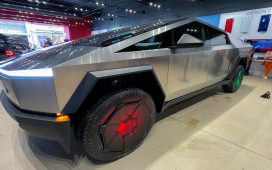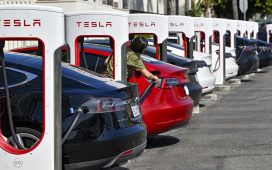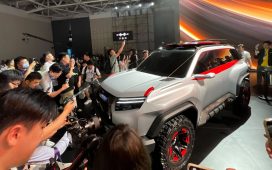As the war for talent rages on companies like Walmart are pouring millions into high-tech corporate campuses that improve the employee experience and foster more face-to-face collaboration. A start-up out of MIT, Opitmus Ride, may help make that possible.
The company’s autonomous shuttles only drive in areas with so-called geofences, or in areas with defined boundaries. These six-passenger self-driving vehicles can safely move through corporate campuses at about 25 miles per hour.
According to Ryan Chin, CEO and co-founder of Optimus Ride in Cambridge, Massachusetts, “the goal is to deploy fleets of these vehicles at corporate campuses, airports, university campuses, retirement communities and resorts.”
It’s a $600 billion market and growing, he notes, and what is driving adoption is the evolution of high-tech corporate campuses nationwide. Many, like Walmart’s planned 300-acre one in northwest Arkansas will try to integrate employees so they are not siloed and can more easily meet and interconnect.
“A lot of corporate campuses are huge sprawling TK and many companies are trying to figure out how to connect workers to each other, so they can more easily meet and collaborate. They realize face time, unlike video conferencing, emailing and calling is a good indicator of productivity.
At the same time, corporate campuses are trying to reduce the use of private automobiles and their carbon footprint. That’s because cars take up a lot of land they can use for construction of new buildings, laboratory and office space.
Typically, shuttles operate on a fixed 4-hour schedule during the rush morning and evening commute times with strict routes. Chin wants to destruct all of that with his autonomous vans that are driverless and can be on-demand means of transport 24/7. “The goal is to provide mobility at all times of the day helping to better connect employees and boost their productivity.”
To ensure safety the Optimus Ride currently employees two non-driving operators per vehicle. In the future, it plans remote monitoring of its vehicles.
“This will totally change the economics of remote driving,” Chin says noting Optimus Ride is already testing its vehicles in cities including Boston’s Seaport and the Brooklyn Navy Yard.
But he has a long term vision of applying the technology to any vehicle type in the marketplace.
For more on tech, transformation and the future of work, join CNBC at the @ Work: People + Machines Summit in San Francisco on November 4. Leaders from Dropbox, Sas, McKinsey and more will teach us how to balance the needs of today with the possibilities of tomorrow, and the winning strategies to compete.








